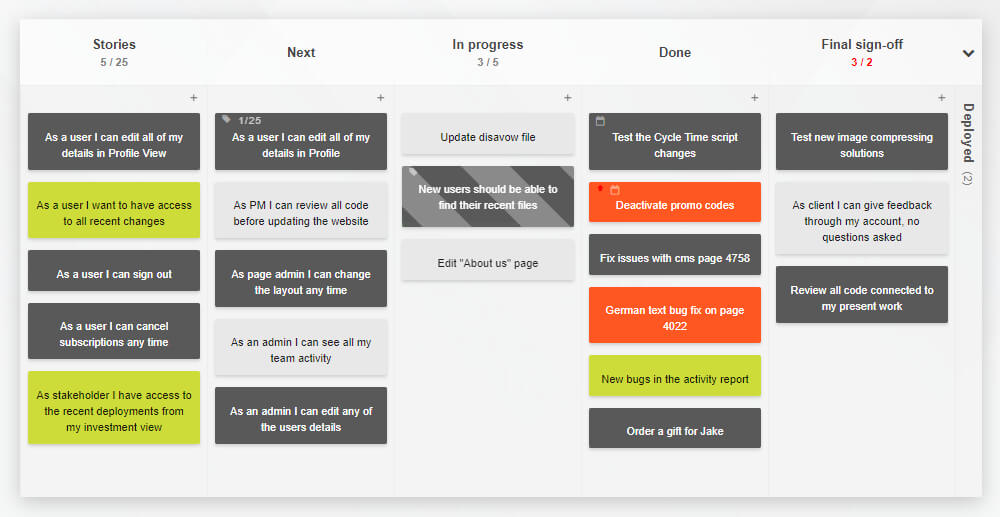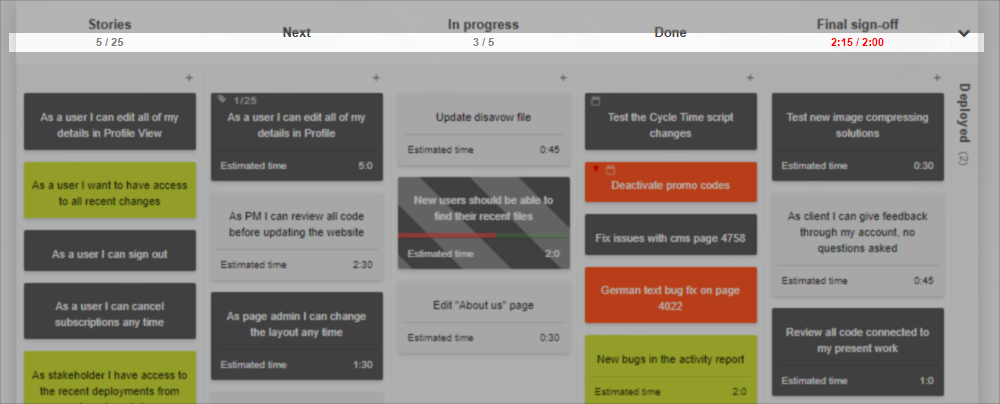Blog
How to Do Scrum in Kanban Tool?02 Sep 2021
Would you consider it a conceptual travesty to use the Kanban Tool to manage a Scrum-based process flow? Well, our customers don't! Kanban Tool boards are widely open to personalization and can map out either of the frameworks with ease.

Kanban vs. Scrum, in short
A Scrum process:
- bases on short iterations - Sprits,
- typically involves an interdisciplinary, small team,
- takes user stories as tasks - as small as possible actionable items,
- may have a Work In Progress limit for the entire Sprint, or per work stage,
- asks that your product is workable after each iteration.
Meanwhile, a Kanban workflow:
- leaves the decision on the project length (if defined at all) to you,
- doesn't prescribe team sizes, though suggests assigning tasks to team members,
- supports both trivial and complex task scopes and sizes,
- recommends limiting the amount of WIP in each "doing"-type stage,
- assumes continuous progress of work within the flow but can accommodate milestones and timeframes.
How to create a Scrum board in kanbantool.com then?
Create a "User Stories" column on the leftmost side, before the Backlog/To Do lane. It will hold your pool of tasks for the current iteration. If you are already aware of stories that need to make it to the following iteration, consider creating another swimlane for it. Then place the story there, and collapse so that it doesn't attract attention yet. Lastly, customize the remaining column layout to the nature of your project.

Decide on whether you want the tasks to be showing who is working on them. If you'd like that, enable the Auto-Assign Power-Up so that a story gets assigned to the team member who pulls it to a working-type column.
Persuade the team to check that each story is estimated to take no more than, e.g., 2 hours. You can be verifying this by demanding that each task/story gets a time estimate value. If the working time exceeds the estimated value, it will become noticeable on the board itself. You can also create a custom notification for when a task gets worked on longer than a set number of hours.

We recommend applying a WIP limit to every column. For example, 25 tasks as a complete single Sprint, so a WIP limit of 25 items for the User Stories stage. And another one, where the number of stories equals your number of team members per each "in progress" stage. You can limit by hours of estimated time too if more desirable.

After every Sprint, you will have achieved a completion stage in the build of your product. Now, either archive the tasks or duplicate those that will need a rework during the next iteration. Then, move the copies back to User Stories to reuse all the information you gathered already.

A workflow like this will give you day-to-day Scrum flow support while letting you add some additional features to the board as and when needed. E.g., card covers for graphics projects, postponed tasks for procrastination-prone team members, and process automation for your manager. Why not use the best available Kanban software, even if Kanban is not your work mode when it has so much to offer to all frameworks? Don't get intimidated by Kanban Tool's method-specific name.
Sign up for a 14-day free trial
to test all the features.
Sign up now and see how we can help
your organization deliver exceptional results.